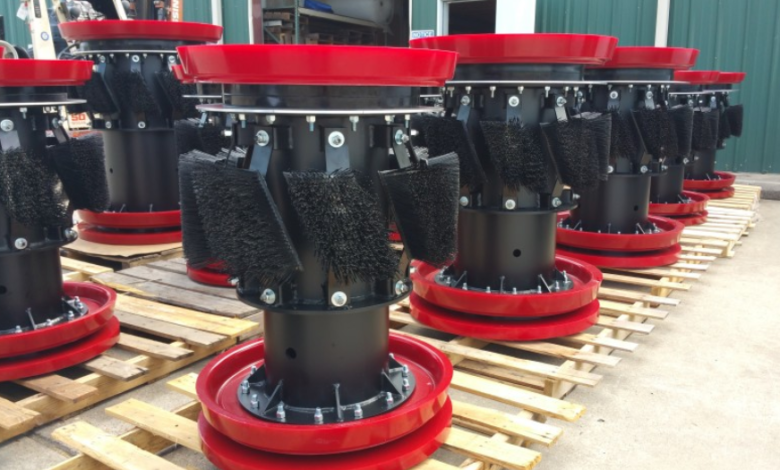Unpacking the Double Pig Pigging System: Advanced Pipeline Optimization for Modern Industries

In the evolving landscape of industrial fluid transfer, efficiency, hygiene, and product recovery have become more important than ever. Companies dealing with viscous or high-value products are particularly interested in systems that help reduce waste, save time, and streamline operations. Among the cutting-edge solutions available, the double pig pigging system stands out as a powerful method for maximizing pipeline performance.
Unlike conventional pigging methods, which use a single pig to recover leftover product and clean pipelines, the double pig pigging system introduces two pigs into the process. This configuration brings multiple operational advantages, especially for businesses managing sensitive product lines or requiring extremely high hygiene standards.
This article dives deep into what a double pig pigging system is, how it functions, the industries that benefit from it, and why it may be a worthwhile investment for future-ready manufacturing.
What is a Double Pig Pigging System?
A double pig pigging system is a more advanced version of traditional pigging setups. Instead of using a single pig (a cleaning or product-recovery device) to push remaining material through a pipeline, this system uses two pigs in sequence. Between them, a “slug” of product or a controlled air gap can be maintained. This technique improves both product recovery and separation between different fluids or phases within the system.
The two pigs work together to either:
- Isolate the product from cleaning media or air, or
- Encapsulate the product between two pigs for maximum recovery with minimal waste or contamination.
This level of control is highly useful in industries where fluid integrity and clean transitions between products are essential.
See also: What are the implications of deepfake technology on information authenticity and media trust?
How the Double Pig Pigging System Works
Here’s a simplified breakdown of how a double pig pigging system functions:
- Pig Loading: Two pigs are loaded into the pig launcher, often at the start of the process line. One pig leads, followed by a buffer zone (air, water, or nitrogen), and then the second pig.
- Product Injection: Product is inserted between the two pigs, creating a sealed “product slug” within the pipeline.
- Pushing Medium Applied: A pushing medium (usually compressed air or gas) is applied behind the second pig to move the entire assembly forward through the pipeline.
- Product Delivery: The product travels through the pipeline with minimal contact with the walls, reducing contamination and product loss.
- Pig Receiving: Both pigs are collected in a receiver once the product has been delivered. Minimal residue is left in the line, reducing the need for extensive cleaning.
This process can be automated using PLC systems, sensors, and control valves for accurate operation and safety.
Advantages of a Double Pig Pigging System
✅ Enhanced Product Recovery
By isolating the product between two pigs, nearly all material within the pipeline can be recovered. This is especially beneficial when transferring expensive products like lotions, syrups, or pharmaceutical suspensions.
✅ Improved Product Separation
A double pig pigging system is ideal for facilities that handle multiple products on the same line. It offers effective separation between different batches without risking cross-contamination.
✅ Faster Product Changeovers
With two pigs doing the job, the cleaning and transition between product batches are faster, minimizing downtime and improving productivity.
✅ Reduced Cleaning Requirements
Less residue in the line means less need for water, solvents, and detergents during clean-in-place (CIP) cycles. This leads to lower costs and a more environmentally friendly process.
✅ Hygienic Compliance
This system supports stringent hygiene requirements in food, cosmetics, and pharmaceutical sectors by minimizing the risk of microbial growth and contamination.
Industries Benefiting from the Double Pig Pigging System
Several sectors are adopting the double pig pigging system to enhance production quality and operational efficiency:
🍫 Food and Beverage
Producers of viscous or sticky products like chocolate, jams, syrups, or dairy find the double pig pigging system ideal for achieving clean transfers without wasting material or compromising flavor integrity.
🧴 Cosmetics and Personal Care
Creams, shampoos, gels, and lotions are often processed in shared pipelines. The double pig system ensures clean separation between product lines, reducing the risk of residual mixing.
💊 Pharmaceuticals
Pharmaceutical companies require sterile, contaminant-free environments. This system helps maintain batch integrity while maximizing product yield, especially for liquid drugs or suspensions.
🛢️ Chemical and Lubricant Manufacturing
When handling chemicals like resins, adhesives, or lubricants, separation is key. A double pig pigging system allows manufacturers to switch between products safely without cleaning the pipeline between every batch.
Limitations and Solutions
Challenge: Higher initial investment compared to single pig systems
Solution: Consider long-term ROI. The increased product recovery and reduced cleaning costs usually justify the upfront expense.
Challenge: Operational complexity
Solution: Invest in training and use automated controls with user-friendly interfaces to minimize human error.
Challenge: Pig wear and tear
Solution: Use high-quality pigs and conduct routine inspections to maintain system performance.
Future of Double Pig Pigging Systems
As technology advances, the double pig pigging system is becoming even more efficient and intelligent:
- Smart Pigs: Embedded with tracking chips or sensors to monitor pipeline conditions and pig location in real-time.
- Eco-Friendly Materials: Development of biodegradable pigs for sustainable operations.
- AI and Predictive Maintenance: Using data from sensors to predict wear and prevent breakdowns before they occur.
With Industry 4.0 adoption, pigging systems are no longer just mechanical tools—they’re part of a smarter, more connected production ecosystem.
Conclusion
The double pig pigging system offers a significant leap in pipeline technology, especially for operations requiring high product purity, reduced waste, and fast changeovers. While the system may require more planning and upfront investment than simpler alternatives, the benefits in efficiency, safety, and cost-effectiveness make it a wise choice for many modern manufacturers.
Whether you’re in food production, chemical processing, or cosmetics manufacturing, considering a double pig pigging system could be the strategic move that takes your operations to the next level of performance.




